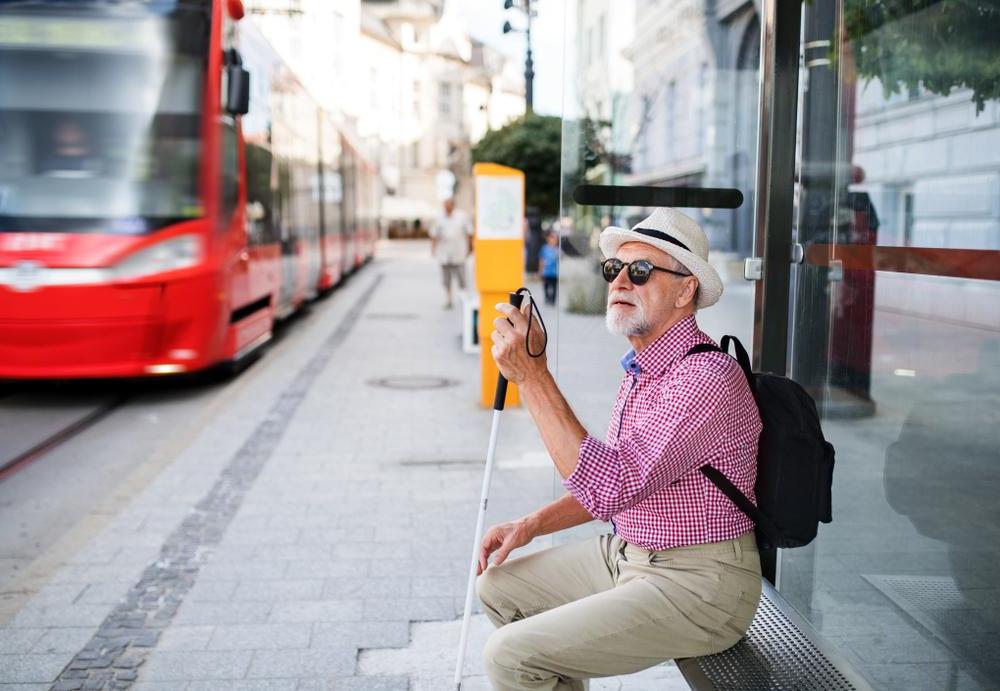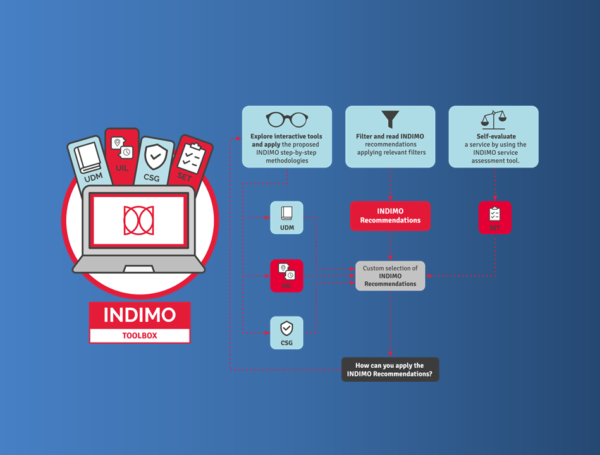by Elena Pappas, Horizon Magazine
Next stop: a transport system accessible for all
Once known for its matchstick industry, the small Swedish city of Jönköping has another claim to fame. It is one of the most accessible cities in Europe for people with disabilities. The winner of the 2021 Access City Award, Jönköping was recognised for its inclusive and universal bottom-up approach. Working closely with disability organisations, city officials rolled out a wide range of initiatives to make buildings, products and environments accessible to as many people as possible.
City-wide improvements include tactile maps and signage, audio descriptions, tactile paving, easy to read facilities, accessible pavements and barrier-free wheelchair access. From the concert hall to the matchstick museum (one of only three in the world), Jönköping’s attractions, shops, public buildings and infrastructure meet the long list of accessibility criteria.
Indeed, Jönköping is one of many examples of European cities that are friendly to people with disabilities. And with one in five Europeans living with some form of disability, city actions are proving indispensable in order to cater to a growing need for accessibility.
Making it easier to move around
To rise to the challenge of universal accessibility, cities can benefit from innovative technologies that promote a barrier-free and inclusive society. Solutions may involve the use of augmented reality, wearables and artificial intelligence. These are just some of the smart tech solutions that scientists are co-designing together with disabled persons in line with the EU’s Urban Mobility Framework.
Transportation researchers in the Netherlands recently made an important discovery by surveying disabled commuters. They learned that the single most popular item in demand amongst users with different types of disability would be a simple, smart information tool. Imagine a special version of Alexa for travel – an interactive accessible journey planner that would greatly improve people’s mobility and willingness to travel.
The researchers, who are working closely with a Europe-wide network of disabled citizens and are supported by the TRIPS project, are drawing on this finding to develop and test mobility solution models.
According to Kristina Andersen, Assistant Professor at the Future Everyday cluster of the Department of Industrial Design at Eindhoven University of Technology, a smart planner is needed to provide accurate information on the accessibility of transport. It could include, for example, the availability of seats on the next bus or whether certain accessibility infrastructure is “out of order”. The smart planner would provide this information in multiple ways – sign language, audio, lip-reading – as well as be integrated with smart glasses. It would also be free to use and not require registration.
‘Poor access to public transport means people are stopped from accessing job opportunities, education, social and leisure activities and other services,’ explained Andersen.
By focusing on the experience and needs of disabled people, we address a wide variety of barriers such as age, health, or language in current urban transport systems.
To showcase how such co-designed mobility solutions can provide inclusive urban transport for all, TRIPS is rolling out case studies in seven pilot cities: Brussels, Bologna, Cagliari, Lisbon, Sofia, Stockholm and Zagreb.
By inviting those with disabilities to highlight the problems they face in using public transport and empowering them to co-design solutions through brainstorming with experts, Andersen and her team hope to address the most serious risk facing people with disabilities: that of social exclusion.
‘By focusing on the experience and needs of disabled people, we can address a wide variety of barriers such as age, health or language in current urban transport systems,’ said Andersen.
All of this information is not just helping with new innovative services, but also sheds light on what’s needed when designing future transport systems.
Leveraging digital technologies
The user perspective is important when designing and testing mobility solutions for persons with disabilities.
In this context, researchers from the MOBI Mobility, Logistics and Automotive Technology Research Centre at the Vrije Universiteit Brussel (VUB) are conducting a pilot study in Antwerp. They are testing a new method to assist visually impaired people at pedestrian crossings by sending audio and vibrating messages to their smartphones, so they can safely cross the road.
‘In most cities, only a select few traffic lights have pedestrian signs with audible signals,’ said Assistant Professor Imre Keseru, who is the lead researcher on the INDIMO project. ‘Often, these get installed on demand and cause complaints from local residents due to the noise produced. They are not always reliable and can malfunction. Therefore, more often than not, blind people have to trust in their own hearing to make sure the pedestrian light is definitely switched to green.’
Keseru also noted that until recently, digital mobility solutions were mainly developed to address the needs of average users, leading to the exclusion of specific groups with very specific needs.
Additionally, ‘while significant achievements have been made mainly in terms of improving the physical accessibility of transport, digital accessibility and inclusion have not been fully addressed,’ said Keseru.
INDIMO researchers are tackling this issue, working with policymakers, tech developers, transportation operators and persons with disabilities. They have created a toolbox featuring universal design principles that include accessibility standards for transport services, plus cybersecurity and privacy guidelines to encourage more accessible and inclusive digital mobility solutions for all.
While significant achievements have been made, mainly in terms of improving the physical accessibility of transport, digital accessibility and inclusion have not been fully addressed.
While the first version of this toolbox is being tested in Antwerp with the intelligent traffic light system, four additional pilot projects (in Spain, Italy, Germany and Israel) are exploring innovative solutions such as on-demand ride sharing in tandem with multimodal route planning.
What all research projects have in common is a call for better digital services to aid disabled users’ mobility and overall quality of life. They also highlight the need for better digital education and tools to enhance social inclusion for those at risk.
Online holiday booking site for travellers with a disability
Planning a holiday or business-related travel is usually more challenging for those with disabilities, who may worry about whether their accommodation will have access ramps for wheelchairs or information in braille, for example.
A unique online booking system for accessible accommodation may help solve this problem. Developed by a Swedish father whose son suffers from a muscle disease and needs a wheelchair when travelling, Handiscover aims to simplify the search for special accommodation. Simply put, it’s a community-based holiday accommodation-booking website with a unique classification system that allows users to search based on their level of mobility.
‘We take into account issues like the number of stairs, distance to the parking space, the width of doors,’ said Sebastien Archambeaud. ‘This information makes it easier to choose where to stay.’
Building on Handiscover, he has also launched a secondary website to assist hotels, retail shops and other businesses to better understand accessibility and disability through education workshops.
70% of disabilities aren’t visible. We tend to associate disability with a wheelchair, but don’t forget the visually and hearing impaired.
‘With half of the 65+ age group having some form of disability, and 70% of all disabilities not visible, it’s important not to associate disability with a wheelchair,’ noted Archambeaud. ‘Let’s not forget the visually and hearing impaired.’
By placing technology at the heart of building and revamping our cities and transportation systems, digital technology and innovation now have the potential to make life easier for people with disabilities.
The research in this article was funded by the EU. If you liked this article, please consider sharing it on social media.
Europe’s most accessible city for disabled persons
The winner of the 2022 Access City Award is… Luxembourg City. Selected by a jury of accessibility experts, Luxembourg City has been recognised for its commitment to improving accessibility for persons with disabilities. Following a ‘Design for All’ approach to make access easier for everyone, including for disabled persons, the city features: low-floor busses equipped with ramps, visual and audio announcements at bus stops, and tactile paving to safely guide people with disabilities at pedestrian crossings.
The award was presented on 3 December by European Commissioner for Equality, Helena Dalli, who congratulated Luxembourg City.
Imagine that you want to take a bus, but you cannot board it,” said Commissioner Dalli. “Or that your child is unable to play with other children because the playground is not accessible. Accessibility makes a real difference in daily life. It is about autonomy and equality. This is why with the Access City Award we recognise the efforts to make cities more accessible and inclusive. I congratulate this year’s winner, Luxembourg City, for its commitment to equal opportunities for persons with disabilities.
This article was originally published in Horizon, the EU Research and Innovation magazine




